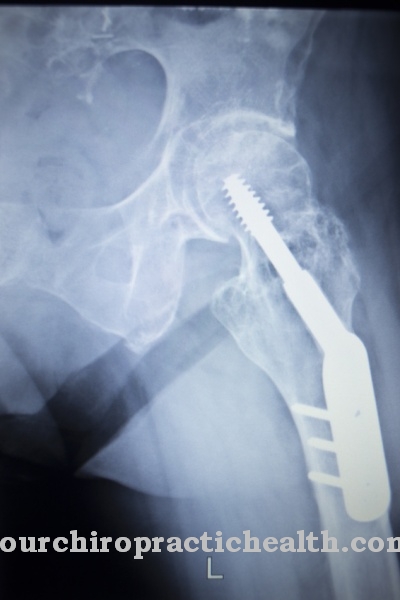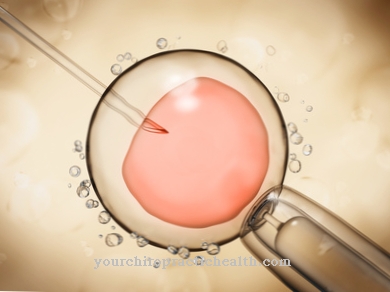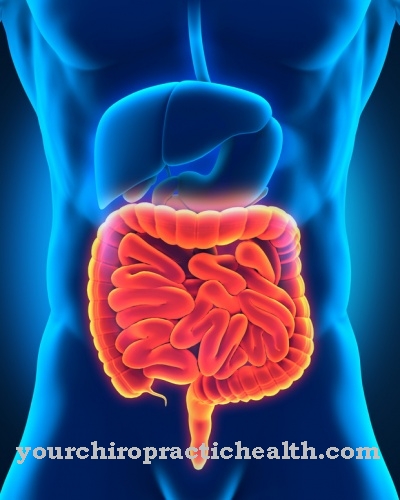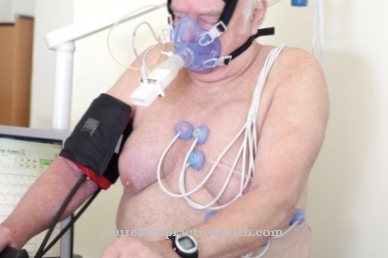Wound drainage are mostly used in postoperative wound care. They are also helpful as an additional aid in the care of chronic wounds. Wound drainage allows blood and wound secretion to drain and pulls the wound edges together. In this way, the healing process can be significantly supported.
What is wound drainage?

The term drainage comes from the English to drain, which translates directly into "derive" and indirectly means "dry out". In terms of wound care and the wound healing process, the effectiveness of this type of treatment is almost self-explanatory.
Per se this means: What is detrimental to the organism is derived so that the healing process can have an effect. Infections and hematoma formation are avoided, wound healing can be monitored and complications excluded.
Function, effect & goals
There are several types of wound drainage, the main difference being whether it is active or passive drainage. Their use depends on the type of wound and the goal of the actual wound management. A hose system is usually used for postoperative wound care or organ drainage such as thoracic drainage; these are made of hygienic plastic.
In the case of postoperative care, the drain remains in the wound for a short time and is removed again promptly. If a chronic wound is to be treated, adhesion drainage is often used. Here, for example, pressure ulcers (pressure ulcers) should be mentioned, a problem especially in elderly care or in bedridden patients. The declared aim here is to give the healing process enough time to close from the center of the wound to the outside. This is only possible if the formation of secretions and thus germs are avoided. This type of drainage must be changed regularly, observing absolute hygienic standards, and usually require longer use.
If a drainage tube is used, one end of a so-called drain (tube, tube) is inserted directly into the wound to guarantee constant contact with the secretion. The other end is diverted from the suture a few centimeters away from the wound, which is carried out at the same time as the suture is placed. This type of wound treatment is connected to a bag that is fixed to the body or a solid container that is removed from the body. Another option is to attach a piece of fabric, such as a gauze tamponage. However, this method follows a different principle. The declared aim of all types of wound drainage is to efficiently drain the wound secretion or blood from the wound. This is the only way to avoid contamination with germs and the subsequent dangerous wound infections.
Different wound drainage methods are used in wound management. They are each based on different physical modes of action. For example, the wound secretion, which collects at the deepest point of the wound, can be guided into a container that is located even deeper by means of gravity. This type is mostly used for large wounds with a correspondingly large suture. Another possibility of derivation is found in the force of adhesion (force of attraction); Here the body fluid is sucked in and absorbed by gauze or other substances and can then be removed with the drainage. In the meantime, appropriately designed foams are used for this type of drainage. They are usually made of polyurethane.
This tissue is much more in line with today's hygiene standards, as there is less breeding ground for harmful germs. Another physical force is used in suction drainage. This is a closed drainage. Here the drainage hose is connected to a bag or collecting vessel which is under negative pressure. A constant suction is created; in this way, blood and wound secretions can be sucked off. A continuously externally generated negative pressure is usually preferred here over so-called vacuum bottles; because depending on how full the containers are, the suction can lose its intensity.
If, on the other hand, it is generated by manually or electrically operated pumps, for example by a bellows, constant suction is guaranteed. A distinction is made between controlled and uncontrolled suction power. For some wounds, especially those that are already infected, an extended hose system is used. A rinsing liquid is introduced into the wound through the first drain and drained out through the other tube. There are perforations on the hoses, and the rinsing fluid is usually what is known as Ringer's solution.
Risks, side effects & dangers
However, wound drainage and its use can also involve risks. Opinions about the pros and cons of their commitment now differ. In the past, the laying of a drain was propagated in almost every operation, but now the risks versus the advantages are being discussed. Some studies are now supposed to prove that the promotion of wound healing cannot be proven directly. Drainage can also be responsible for causing undesirable complications.
Wound drainage is a gateway to the drainage of pathological body fluids, but in the same way it can promote access of infectious germs to the wound. In the worst case, this in turn leads to dangerous wound infections. The body can also react to the drainage system with defense, since it is recognized as a foreign body. If drains remain in the body for a longer period of time, adhesions can also occur. Bleeding can occur, pressure problems due to the position of the hose or complications from kinking by the patient himself cannot be ruled out either.

























.jpg)

.jpg)
